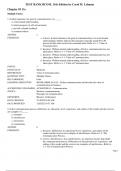Exam (elaborations)
Test Bank BCOM, 11th Edition by Carol M. Lehman. ISBN: 9780357901243.
- Course
- Institution
Test Bank BCOM, 11th Edition by Carol M. Lehman, Debbie D. DuFrene, Robyn Walker. ISBN-10 : X ISBN-13: 9783 Chapters 1 to 14 test bank for BCOM 11e Lehman.
[Show more]



